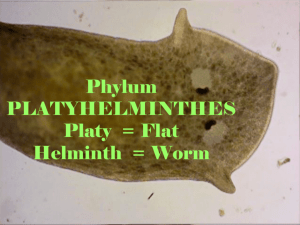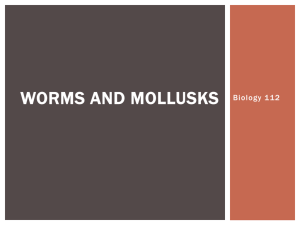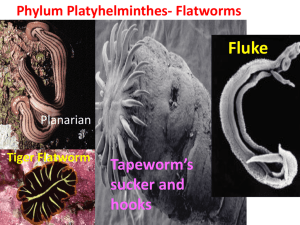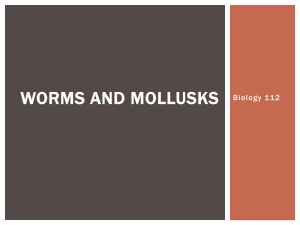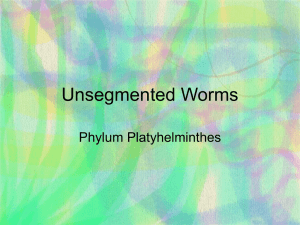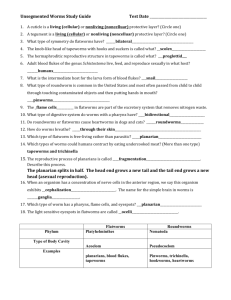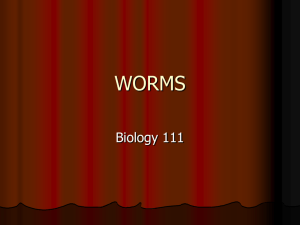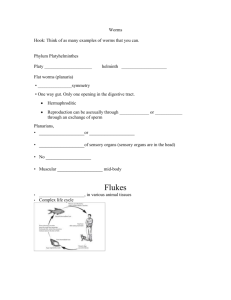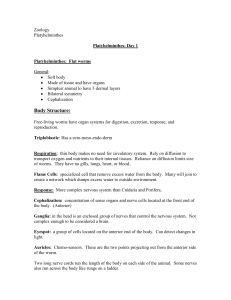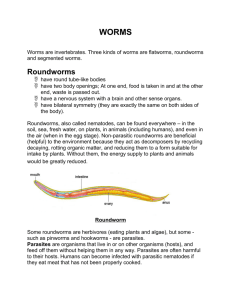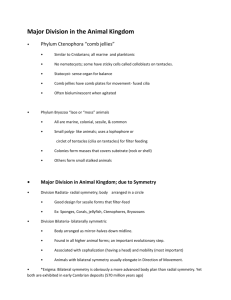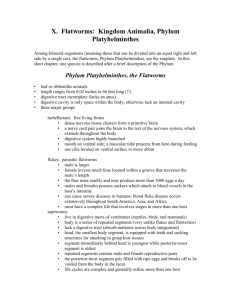Worms!
advertisement
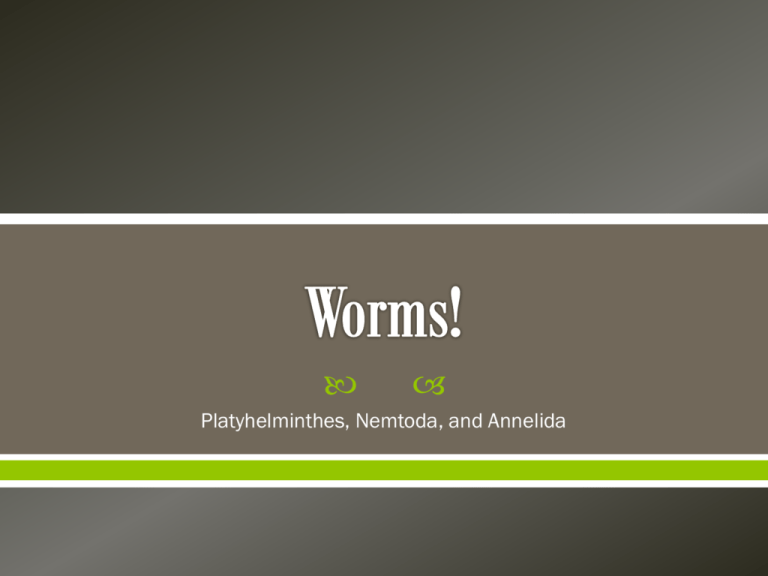
Platyhelminthes, Nemtoda, and Annelida There are three major groups of worms: o 1) Flatworms (Phylum Platyhelminthes) o 2) Roundworms (Phylum Nematoda) o 3) Segmented Worms (Phylum Annelida) Textbook Introduction Flatworms : have tissues and internal organ systems. Flatworms are acoelomates, meaning without coelom. coelom: fluid-filled body cavity They have right and left sides, and most have enough cephalization to have what is called a head. Most cells are in contact with external environment, so they rely on diffusion. No gills, heart, blood or blood vessels. Some have flame cells: specialized cells that remove excess water and wastes. Head encloses several ganglia: groups of nerve cells Not complex enough to be called a brain Many have eyespots: groups of cells that can detect light. Most are hermaphrodites: both male and female reproductive organs Sexual reproduction: two worms join and deliver sperm to each other; eggs are then laid in clusters Asexual reproduction: fission - organism splits in two and each half grows to form a complete organism Turbellarians: free-living flatworms, most live in marine or fresh water. (planarians) Trematoda: parasitic flatworms, most flukes infect the internal organs of their host. (flukes) Cestoda : long, flat, parasitic worms that are adapted to life inside the intestine of the host. (tapeworms) 1. What is a flatworm? 2. What are the three groups of flatworms? Textbook Introduction Roundworms Have a pseudocoelom, or "false coelom"; not a true fluidfilled, tissue-lined coelom Body plan: "tube within a tube" Digestive tract has two openings – mouth and anus Many free-living forms are predators with grasping mouth parts to catch and eat small animals. Other eat decaying matter, and several types are parasitic and cause disease in humans. Rely solely on diffusion, no internal transport, Simple nervous system with several ganglia Sexual: most species have separate sexes. Internal Fertilization: Male deposits sperm inside female. Textbook Introduction Segmented Worms Ring-like appearance, or "segmented" body parts Many have bristles, (setae), attached to each segment Have a true coelom that is lined with tissue came from mesoderm (middle layer) Many use a pharynx; some have sharp jaws to attack prey. Earthworms: pharynx pumps food and soil into a tube called the esophagus. Food enters the crop where it is stored, and then through the gizzard, where it is ground into small pieces Closed circulatory system: blood is contained within a network of blood vessels. Aquatic annelids have gills Gill: organ specialized for the exchange of gases underwater. Earthworms take in oxygen and release carbon dioxide through their moist skin Most reproduce sexually. Two worms attach to each other, exchange sperm, then store it. When eggs are ready, the clitellum secretes a mucous ring into which eggs and sperm are released and fertilization takes place. The ring slips off the worm and forms a protective cocoon from which young worms hatch weeks later.
